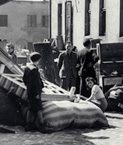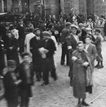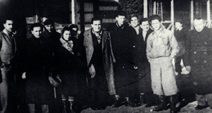Postal services in the ghettos were run by the Judenräte (Jewish councils). The ghetto department of posts was the only communication link between Judenräte and between them and the
outside world. It also provided dozens of staff with an income and the taxes that were applied to postal items and payment for stamps were sources of revenue for the Judenrat coffers. Outgoing mail was always stamped “Judenrat” and carried the stamp of the German censor as well.
The postal services mirrored the living conditions in the occupied areas. In Poland, for example, apart from Łódź, it was easier to send and receive mail in towns under German rule (i.e., annexed to the Reich), where ghettos were not established until late 1942, than in cities such as Warsaw and Kraków, which were administered by the Generalgouvernement. In the latter locations, postal services were often disrupted and many letters never reached their destinations. Once the Aktionnen took place, the services were discontinued.










